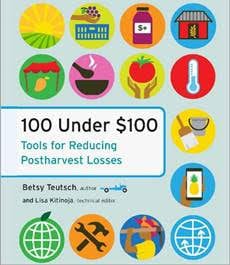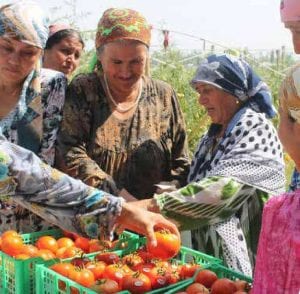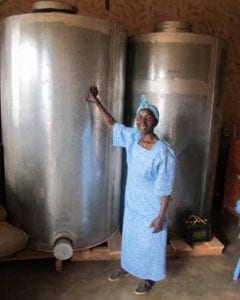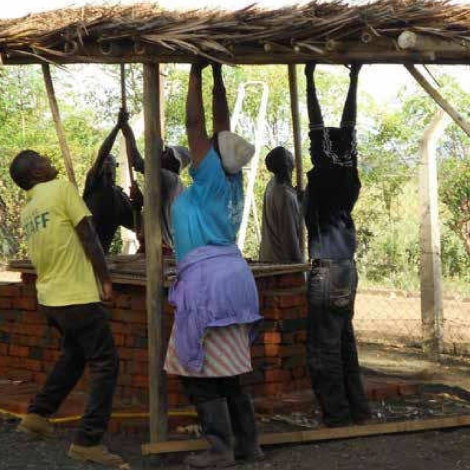 Global post-harvest food loss has a long list of elegant solutions. And at least 100 of them cost less than (USD) $100. They have not been implemented on a large scale, however. Why? In many cases, farmers and organizations that serve them simply do not know what is available. A new book takes a step toward sharing that knowledge.
Global post-harvest food loss has a long list of elegant solutions. And at least 100 of them cost less than (USD) $100. They have not been implemented on a large scale, however. Why? In many cases, farmers and organizations that serve them simply do not know what is available. A new book takes a step toward sharing that knowledge.
In 100 Under $100: Tools for Reducing Post-Harvest Loss, Betsy Teutsch has presented extremely affordable tools for saving food until it reaches the plate.
See also: 100 Under $100 catalogues technologies that improve women’s lives in developing countries
The book was a commission from the Postharvest Education Foundation, which requested a follow-up to Ms. Teutsch’s first book, a list of ‘100 Under $100’ products that empower women. The new book draws on the foundation’s resources and experts for added layers of scientific rigor. Some of the entries are culled from research presented in Dr. Adel Kader and Lisa Kitinoja’s text, Small-Scale Postharvest Handling Practices: A Manual For Horticultural Crops. Ms. Kitinoja served as 100 Under $100‘s Technical Editor, the PEF Board advised and alumni of PEF’s online courses served as contributors in the field.
The book is a resource, first. The footnotes are long and well linked. Each entry concludes with links to video demos, how-to guides and outside websites. But Ms. Teutsch is also a story teller, and details welled up in the research that did not make it onto the page. One example: plastic crates.
 “You wouldn’t think that Reusable Plastic Crates would change the world, but they have. They are a fabulous innovation, both from the point of view of how much produce they have saved from being squished at the bottom of bags and rustic baskets. And the fact that they can be reused 150 times, as opposed to cardboard crates that are just good for one or two uses, or lightweight wood cartons, just once. We don’t usually sing the praises of plastic these days, but multi-use sturdy plastic does a terrific job,” Ms. Teutsch says. The crates are Tool 12 in the list of 100.
“You wouldn’t think that Reusable Plastic Crates would change the world, but they have. They are a fabulous innovation, both from the point of view of how much produce they have saved from being squished at the bottom of bags and rustic baskets. And the fact that they can be reused 150 times, as opposed to cardboard crates that are just good for one or two uses, or lightweight wood cartons, just once. We don’t usually sing the praises of plastic these days, but multi-use sturdy plastic does a terrific job,” Ms. Teutsch says. The crates are Tool 12 in the list of 100.
While researching the crates, Ms. Teutsch sent a note via Facebook to a social business built around passion fruit called KadAfrica. She wanted to use one of their photos, but noticed that a woman in the picture was weighing fruit in a plastic bag. Fruit can be crushed in plastic bags, so it is considered a bad practice in the effort to preserve food.
“Eric, the social entrepreneur who runs the business, lamented to me that markets in Uganda demand those bags even though they are responsible for huge fruit losses. Fingers crossed the book can help the market change its protocol,” Ms. Teutsch says. “It’s also pretty cool to be chatting on Facebook with someone on the other side of the world and hearing about their frustrations,” she adds.
Metal silos are another product that caught Ms. Teutsch’s attention (Tool 60 in the book). The silos caught on in Central America, then migrated to Africa through technology transfer schemes.
 “They even brought Central American tin smiths to train African tin smiths,” Ms. Teutsch says. The silos help smallholder farmers bridge the post-harvest season when food supplies dwindle, allowing them to sell at higher rates before the next growing season. The silos have also inadvertently empowered women. Maize is considered a ‘women’s crop’ in some African communities, so women control the silos.
“They even brought Central American tin smiths to train African tin smiths,” Ms. Teutsch says. The silos help smallholder farmers bridge the post-harvest season when food supplies dwindle, allowing them to sell at higher rates before the next growing season. The silos have also inadvertently empowered women. Maize is considered a ‘women’s crop’ in some African communities, so women control the silos.
“In one community, women were fed up with the men withdrawing maize for expenditures they didn’t approve of, and they asked the designers to add locks to the silos. They are really giant safe deposit boxes,” Ms. Teutsch says.
A third product Ms. Teutsch highlights is the Zero Energy Cooling Chamber (Tool 71 in the book).
“They look like mausoleums. You can build one in a few hours and you use cheap, very porous bricks. And inside the cooling chamber, you store your produce in – you guessed it – Reusable Plastic Crates. You don’t even need exact measurements,” Ms. Teutsch says. The chambers can extend the shelf-life of produce for days or even weeks without electricity. Simply add water for evaporative cooling.
The book is free to download as a PDF and available as a paperback and a low-cost e-book for Amazon’s Kindle.
Free PDF: postharvest.org
Amazon e-book ($3.99): amazon.com
And see the book and the collaborators who made it on social media.
Instagram: 100postharvesttools
Twitter: #100postharvesttools
Facebook: 100postharvesttools

